Pickleball Playbook
How to play Pickleball
Before the game starts, both sides decide the right to choose the venue and the right to serve by flipping a coin. Then there are two scoring systems to choose from:

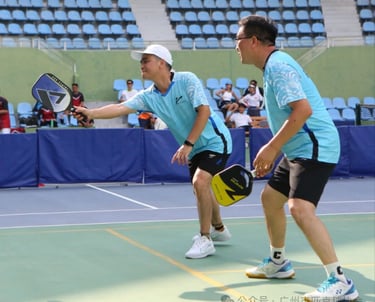
Direct scoring system
No matter the serving or receiving side, winning the round will score points. A single game is usually a 21-point game.
Serving scoring system
Only the serving party can score points, and the receiving party must try to prevent the other party from receiving the ball or hitting it out of bounds, so as to gain the right to serve. There are single-game 11-point, 15-point, and 21-point systems.
Court
The net is low (91.4 cm), the ball is slow, and there is little running involved. It does not require high physical fitness and strength , and is not prone to sports injuries. It is considered a "health-preserving sport." "It can be played by men, women, and children, from 70 to 80 years old."
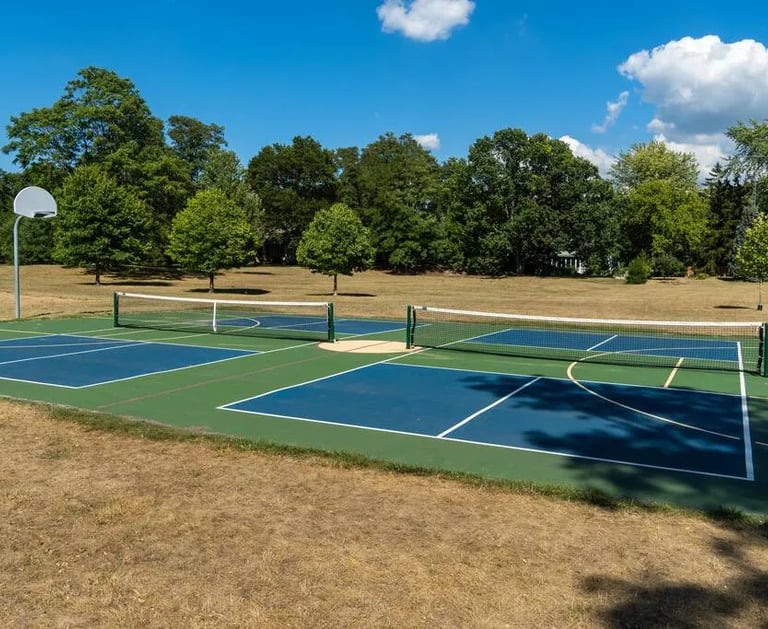

Pickleball Rules and Regulations – Summary
1. Court & Equipment
Court size: 20 feet wide x 44 feet long (same for singles and doubles).
Net height: 36 inches at the sidelines, 34 inches in the center.
Paddle: Solid, no stringed surface.
Ball: Plastic with holes (like a wiffle ball).
3. Faults
Ball out of bounds.
Ball hits the net and doesn’t go over.
Volleying from the kitchen.
Ball bounces twice before being returned.
Serve lands in the wrong area or hits the kitchen.
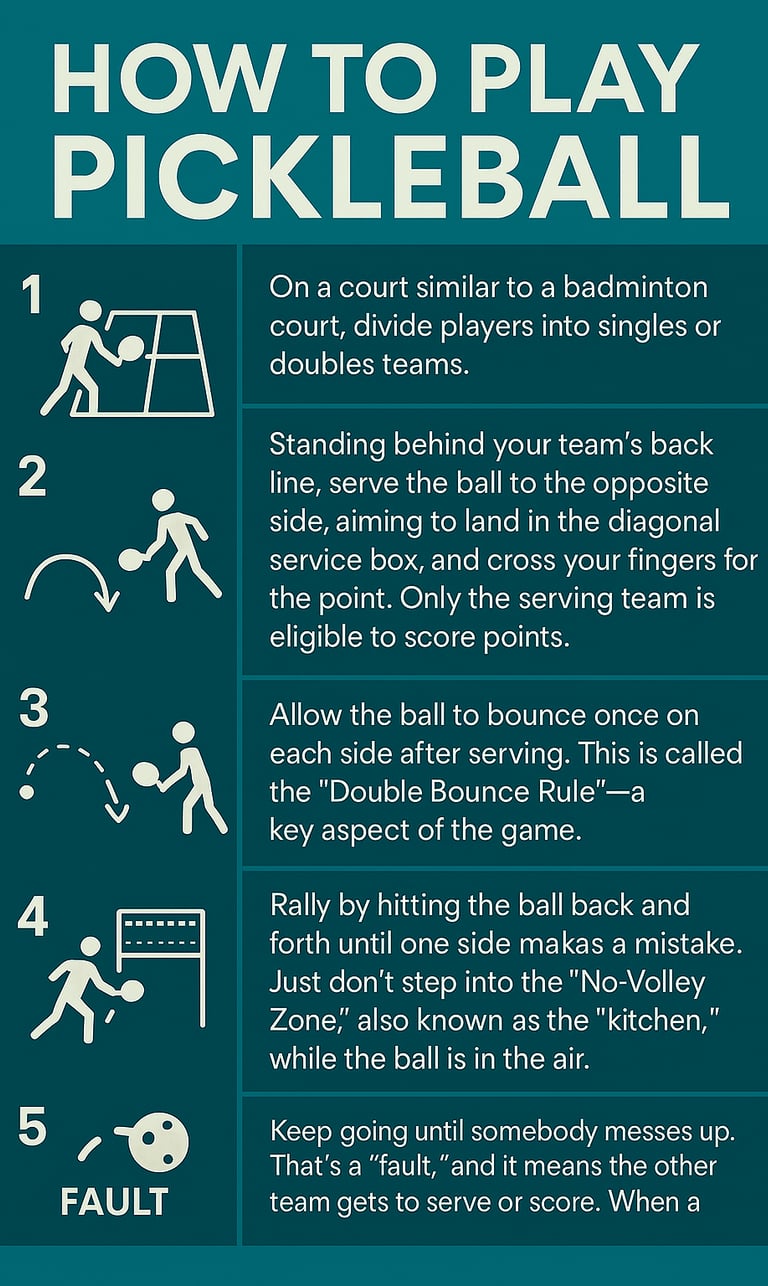

2. Basic Gameplay
Played as singles or doubles.
Serve: Underhand, below waist level, diagonal across court. The server must keep both feet behind the baseline.
Scoring: Only the serving team can score. Games are played to 11 (win by 2). In tournaments, games may go to 15 or 21.
Double Bounce Rule: Each side must let the ball bounce once after the serve before volleying.
Non-Volley Zone (Kitchen): 7-foot area on both sides of the net. No volleys allowed while standing in it.
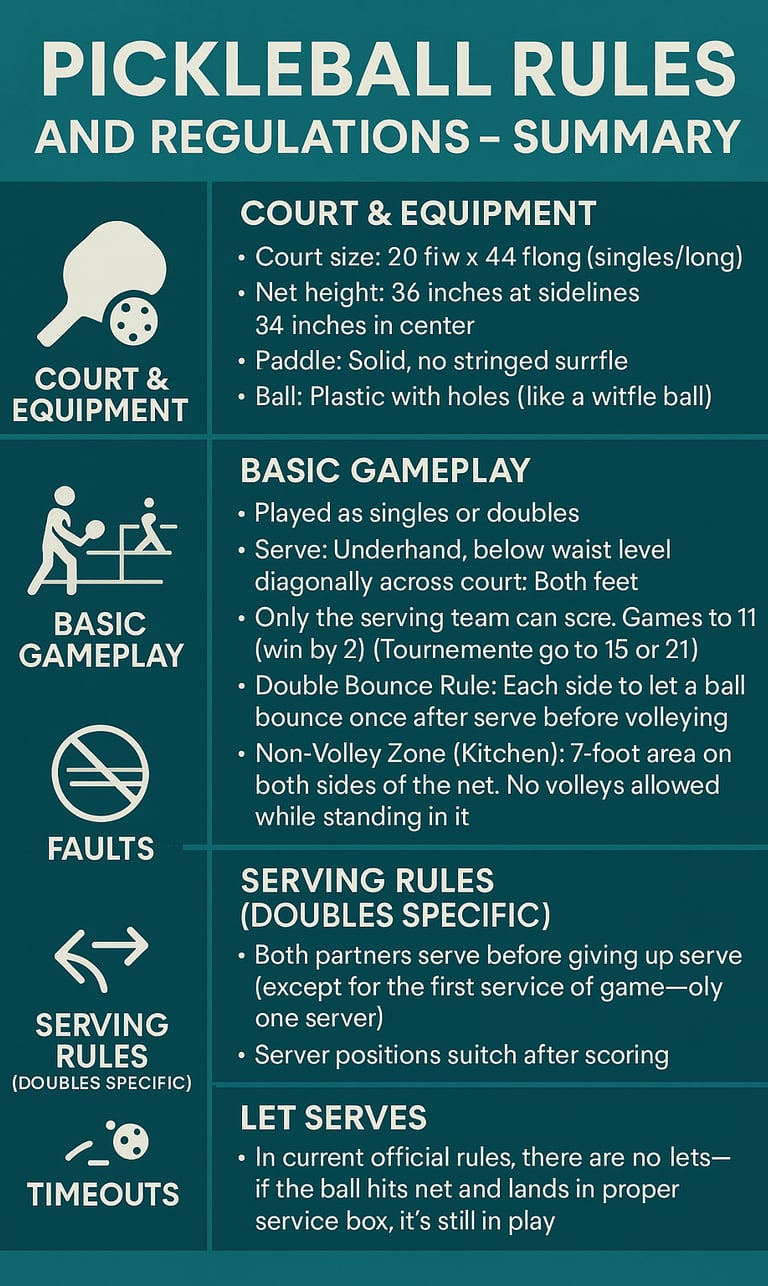

4. Serving Rules (Doubles Specific)
Both partners serve before giving up the serve (except for the first service of the game—only one server).
Server positions switch after scoring.
5. Let Serves
In current official rules, there are no lets—if the ball hits the net and lands in the proper service box, it’s still in play.
6. Timeouts
Each team gets two timeouts per game.
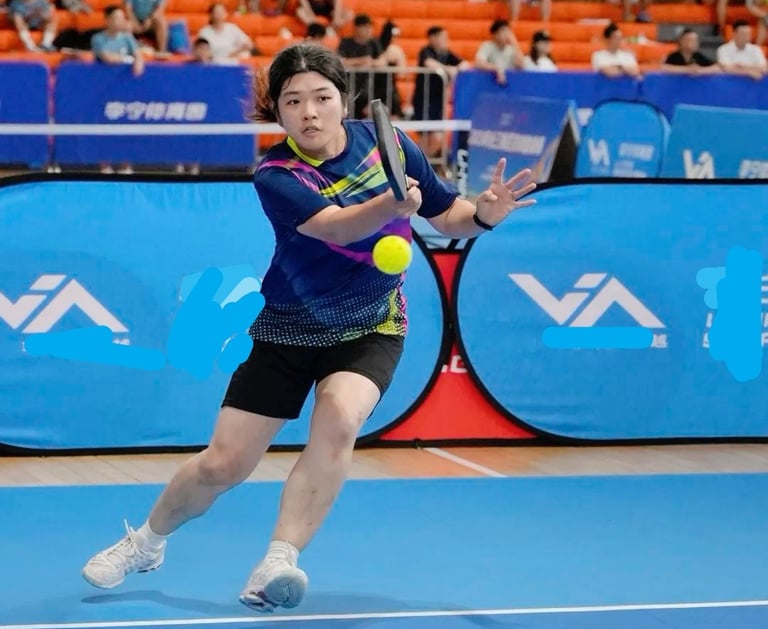

Format: Singles vs. Doubles
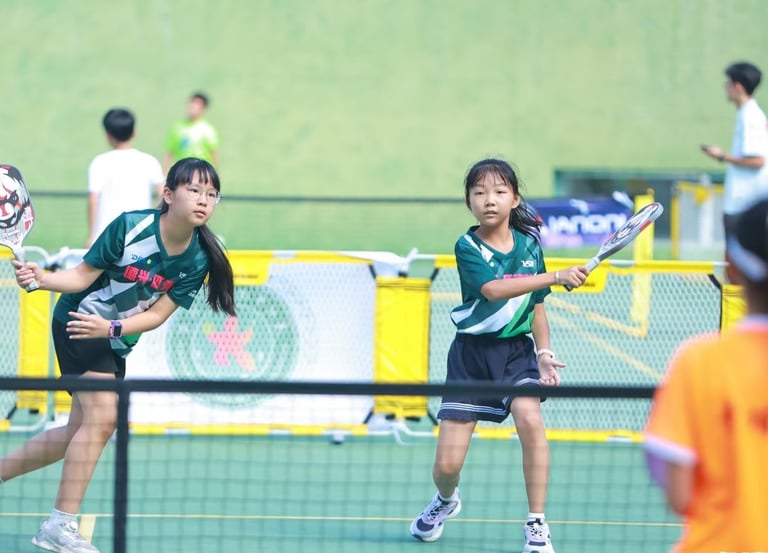

Doubles Format
Two players per side.
Only the serving team can score.
Each partner serves before a side-out (except at the start of the game).
Players switch positions only when scoring.
Strategy and teamwork are key—less movement, more coordination.
Single Format
One player per side.
Players serve and receive diagonally.
Server switches sides after scoring a point.
Only one server per player.
Game is faster-paced and more physically demanding due to full court coverage.
